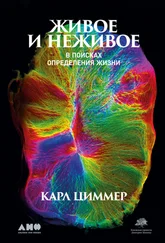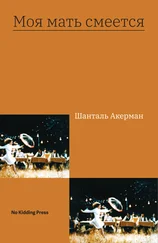Knight, Thomas Andrew. 1799. “An Account of Some Experiments on the Fecundation of Vegetables. In a Letter from Thomas Andrew Knight, Esq. To the Right Hon. Sir Joseph Banks, K. B. P. R. S.” Philosophical Transactions of the Royal Society of London 89: 195–204.
Knoblich, Juergen A. 2008. “Mechanisms of Asymmetric Stem Cell Division.” Cell 132: 583–97.
Knowler, W. C., R. C. Williams. D. J. Pettitt, and A. G. Steinberg. 1988. “Gm3: 5, 13, 14 and Type 2 Diabetes Mellitus: An Association in American Indians with Genetic Admixture.” American Journal of Human Genetics 43: 520–26.
Koltunow, Anna M. G., Susan D. Johnson, and Takashi Okada. 2011. “Apomixis in Hawkweed: Mendel’s Experimental Nemesis.” Journal of Experimental Botany 62: 1699–707.
Kondrashov, Alexey S. 2017. Crumbling Genome: The Impact of Deleterious Mutations on Humans. Hoboken, NJ: Wiley Blackwell.
Koonin, Eugene V., and Yuri I. Wolf. 2009. “Is Evolution Darwinian or/and Lamarckian?” Biology Direct 4: 42.
Kornrich, Sabino. 2016. “Inequalities in Parental Spending on Young Children.” AERA Open 2: 1–12.
Koszul, Romain, Matthew Meselson, Karine Van Doninck, lean Vandenhaute, and Denise Zickler. 2012. “The Centenary of Janssens’s Chiasmatype Theory.” Genetics 191: 309–17.
Kouzak, Samara Silva, Marcela Sena Teixeira Mendes, and Izelda Maria Carvalho Costa. 2013.”Cutaneous Mosaicisms: Concepts, Patterns and Classifications.” Anais Brasileiros de Dermatologia 88: 507–17.
Kretzschmar, Kai, and Fiona M. Watt. 2012. “Lineage Tracing.” Cell 148: 33–45.
Kűhl, Stefan. 2002. The Nazi Connection: Eugenics, American Racism, and German National Socialism. New York: Oxford University Press.
Kumar, Akash, Allison Ryan, Jacob O. Kitzman, Nina Wemmer, Matthew W. Snyder, Styrmir Sigurjonsson, Choli Lee, and others. 2015. “Whole Genome Prediction for Preimplantation Genetic Diagnosis.” Genome Medicine 7: 35.
Kun, Ádám, András Szilágyi, Balázs Könnyű, Gergely Boza, István Zachar, and Eörs Szathmáry. 2015. “The Dynamics of the RNA World: Insights and Challenges.” Annals of the New York Academy of Sciences 1341: 75–95.
Kuzma, Jennifer, and Lindsey Rawls. 2016. “Engineering the Wild: Gene Drives and Intergenerational Equity.” Jurimetrics 56: 279–96.
Kwiatkowski. D. P., G. Busby, G. Band, K. Rockett, C. Spencer, Q. S. Le, M. Jallow, E. Bougama, V. Mangana, and L. Amengo-Etego. 2016. “Admixture into and Within Sub-Saharan Africa.” eLife 5: e15266.
Lai-Cheong, Joey E., John A. McGrath, and Jouni Uitto. 2011. “Revertant Mosaicism in Skin: Natural Gene Therapy.” Trends in Molecular Medicine 17: 140–48.
Lakritz, Naomi. 1998. “What About the Babies Science Cooks Up in the Lab?” Calgary Herald. June 16, p. B1.
Laland, Kevin N. 2017. Darwin’s Unfinished Symphony: How Culture Made the Human Mind. Princeton: Princeton University Press.
Lam, May P. S., and Bernard M. Y. Cheung. 2012. “The Pharmacogenetics of the Response to Warfarin in Chinese.” British Journal of Clinical Pharmacology 73: 340–47.
Lämke, Jörn, and Isabel Bäurle. 2017. “Epigenetic and Chromatin-based Mechanisms in Environmental Stress Adaptation and Stress Memory in Plants.” Genome Biology 18: 124.
Lander, E. S., and N. J. Schork. 1994. “Genetic Dissection of Complex Traits.” Science 265: 2037–48.
Landolt, A. M., and M. Zachmann. 1980. “The Irish Giant: New Observations Concerning the Nature of His Ailment.” Lancet 315: 1311–12.
Langdon-Davies, John. 1963. Carlos: The King Who Would Not Die. Englewood Cliffs: Prentice-Hall.
Lapaire, O., W. Holzgreve. J. C. Oosterwijk, R. Brinkhaus, and D. W. Bianchi. 2007. “Georg Schmorl on Trophoblasts in the Maternal Circulation.” Placenta 28: 1–5.
Laughlin, Harry H. 1920. “Biological Aspects of Immigration.” In Hearings Before the House Committee on Immigration and Naturalization. Sixty-Sixth Congress, Second Session, April 16–17.
Lavery, Stuart, Dima Abdo, Mara Kotrotsou, Geoff Trew, Michalis Konstantinidis, and Dagan Wells. 2013. “Successful Live Birth Following Preimplantation Genetic Diagnosis for Phenylketonuria in Day 3 Embryos by Specific Mutation Analysis and Elective Single Embryo Transfer.” JIMD Reports 7: 49–54.
Lawrence, Cera R. 2008. “Preformationism in the Enlightenment.” Embryo Project Encyclopedia. Senior editor Erica O’Neil. https://embryo.asu.edu/pages/preformationism-enlightenment(accessed August 24, 2017).
Laxova, Renata. 1998. “Lionel Sharpies Penrose, 1898–1972: A Personal Memoir in Celebration of the Centenary of His Birth.” Genetics 150: 1333–40.
Lazaridis, Iosif, Dani Nadel, Gary Rollefson, Deborah C. Merrett, Nadin Rohland, Swapan Mallick, Daniel Fernandes, and others. 2016. “Genomic Insights into the Origin of Farming in the Ancient Near East.” Nature 536, no. 7617. doi: 10.1038/naturel9310.
________, Nick Patterson, Alissa Mittnik, Gabriel Renaud, Swapan Mallick, Karola Kirsanow, Peter H. Sudmant, and others. 2014. “Ancient Human Genomes Suggest Three Ancestral Populations for Present-Day Europeans.” Nature 513: 409–13.
Lazebnik, Y., and G. E. Parris. 2015. “Comment On: ‘Guidelines for the Use of Cell Lines in Biomedical Research’: Human-to-Human Cancer Transmission as a Laboratory Safety Concern.” British Journal of Cancer 112: 1976–77.
Lederer, Susan E. 2013. “Bloodlines: Blood Types, Identity, and Association in Twentieth-Century America.” In Blood Will Out: Essays on Liquid Transfers and Flows. Edited by Janet Carsten. London: John Wiley and Sons.
Ledford, Heidi. 2016. “CRISPR: Gene Editing Is Just the Beginning.” Nature 531: 156.
Lein, Ed, and Mike Hawrylycz. 2014. “The Genetic Geography of the Brain.” Scientific American 310: 70–77.
Lenormand, Thomas, Jan Engelstädter, Susan E. Johnston, Erik Wijnker, and Christoph R. Haag. 2016. “Evolutionary Mysteries in Meiosis.” bioRxiv. doi: 10.1101/050831.
Leontiou, Chrysanthia A., Maria Gueorguiev, Jacqueline van der Spuy, Richard Quinton, Francesca Lolli, Sevda Hassan, Harvinder S. Chahal, and others. 2008. “The Role of the Aryl Hydrocarbon Receptor-Interacting Protein Gene in Familial and Sporadic Pituitary Adenomas.” Journal of Clinical Endocrinology and Metabolism 93: 2390–2401.
Leroi, Armand Marie. 2003. Mutants: On Genetic Variety and the Human Body. New York: Viking Penguin.
________. 2014. The Lagoon: How Aristotle Invented Science. New York: Viking Penguin.
Lester, Camilla H., Niels Frimodt-Møller, Thomas Lund Sorensen, Dominique L. Monnet, and Anette M. Hammerum. 2006. “In Vivo Transfer of the vanA Resistance Gene from an Enterococcus faecium Isolate of Animal Origin to an E.faecium Isolate of Human Origin in the Intestines of Human Volunteers.” Antimicrobial Agents and Chemotherapy 50: 596–99.
Lewis, Ronald L. 1974. “Slavery on Chesapeake Iron Plantations Before the American Revolution.” Journal of Negro History 59: 242–54.
Lewis, Simon L., and Mark A. Maslin. 2015. “Defining the Anthropocene.” Nature 519: 171–80.
Lewontin, Richard C. 1970. “Race and Intelligence.” Bulletin of the Atomic Scientists 26: 2–8.
________. 1972. “The Apportionment of Human Diversity.” Evolutionary Biology 6: 381–98.
Li, Mu, and Creswell J. Eastman. 2012. “The Changing Epidemiology of Iodine Deficiency.” Nature Reviews Endocrinology 8: 434–40.
Читать дальше
![Карл Циммер Она смеется, как мать [Могущество и причуды наследственности] [litres] обложка книги](/books/406077/karl-cimmer-ona-smeetsya-kak-mat-moguchestvo-i-pr-cover.webp)

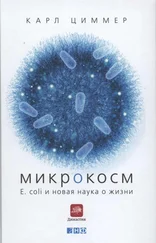
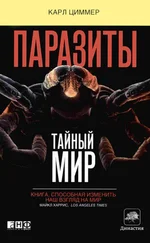

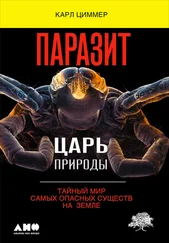
![Карл Циммер - Паразит – царь природы [Тайный мир самых опасных существ на Земле] [litres]](/books/396828/karl-cimmer-parazit-car-prirody-tajnyj-mir-sam-thumb.webp)
![Шалини Боланд - Тайная мать [litres]](/books/414707/shalini-boland-tajnaya-mat-litres-thumb.webp)
![Александр Донских - Отец и мать [litres]](/books/415697/aleksandr-donskih-otec-i-mat-litres-thumb.webp)
![Евгений Гаглоев - Верховная Мать Змей [litres]](/books/429235/evgenij-gagloev-verhovnaya-mat-zmej-litres-thumb.webp)
